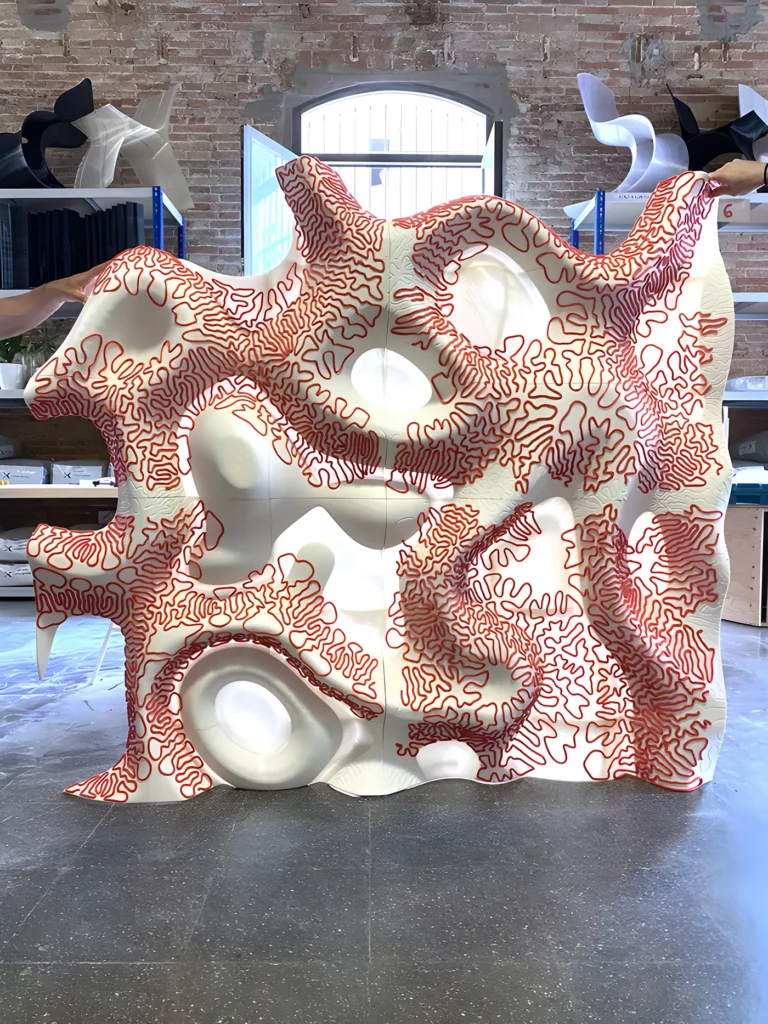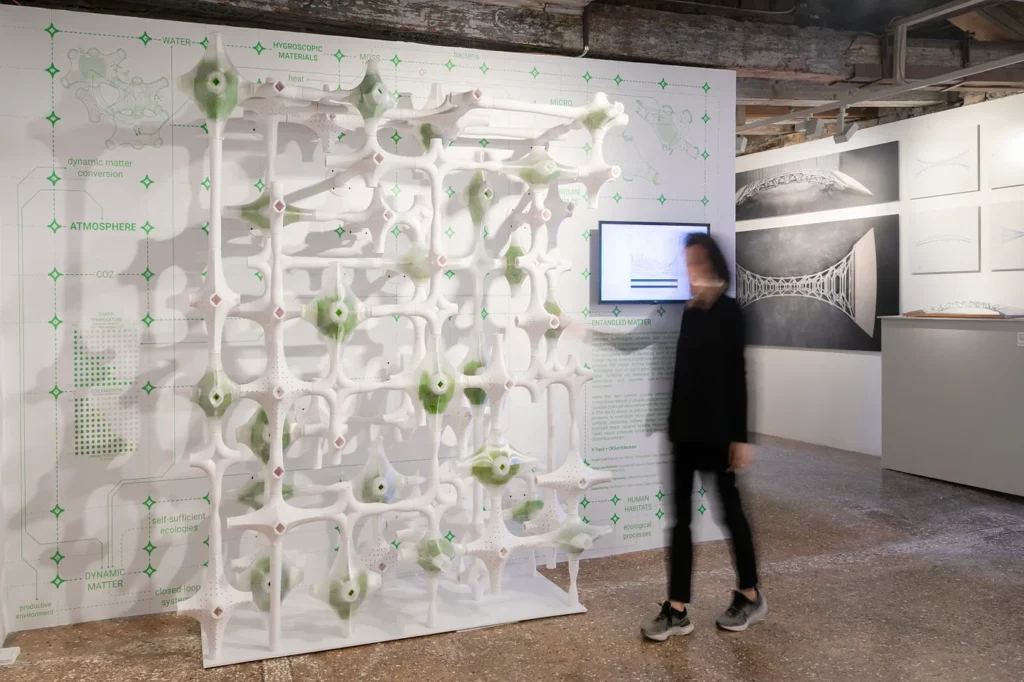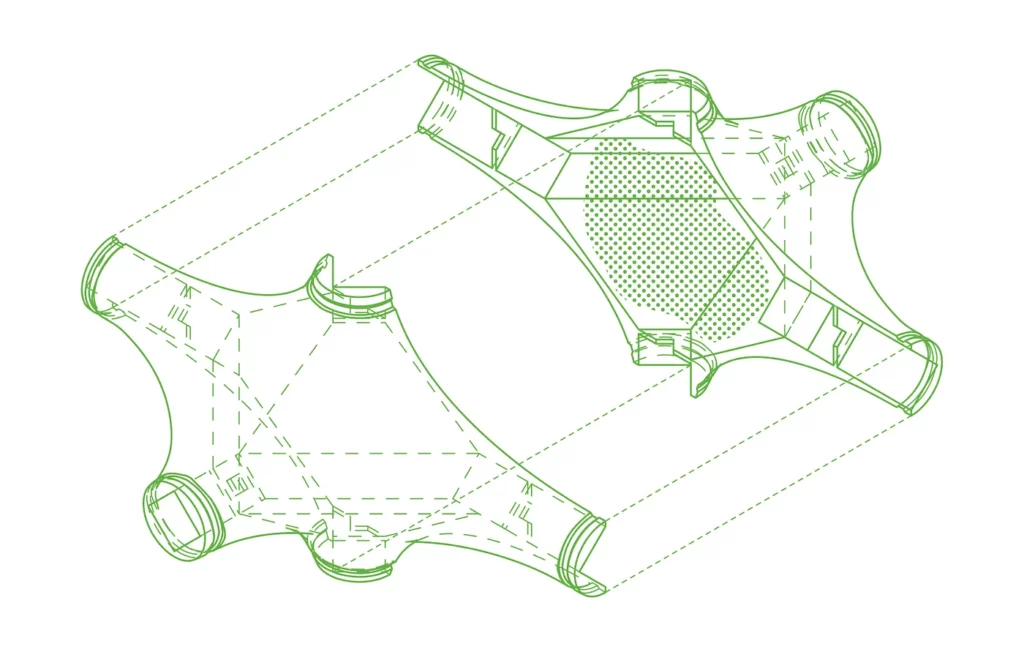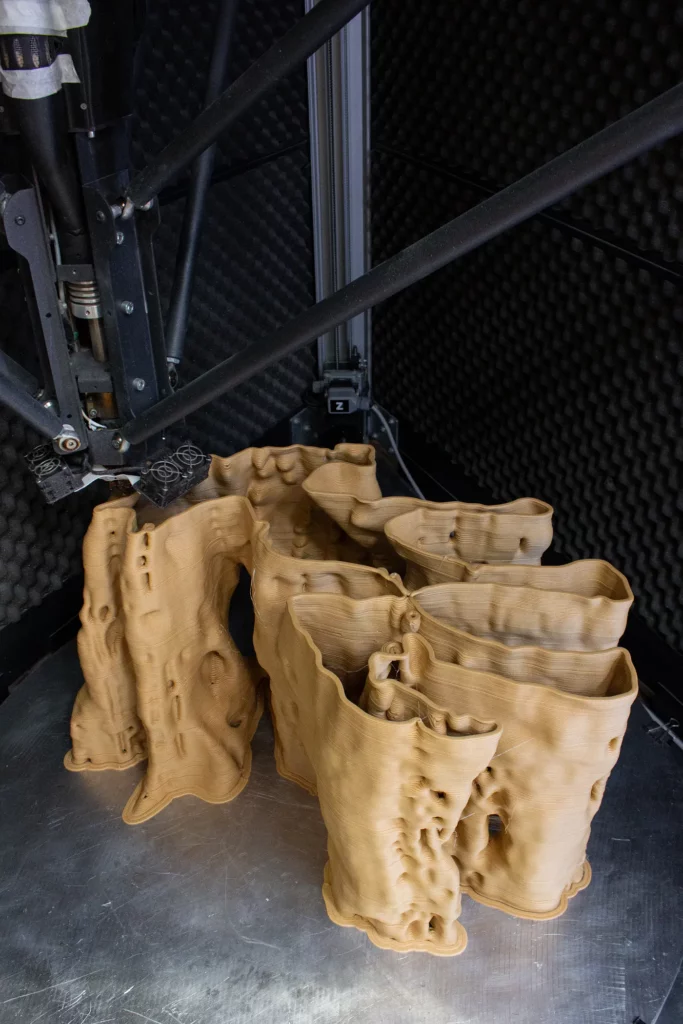Fabricating Tomorrow: LAMÁQUINA at the Venice Biennale
From engineering visionary installations to fabricating architectural systems for a better future, LAMÁQUINA has contributed to three consecutive editions of the Venice Biennale.

If there is one event that has been giving the pulse of global architectural innovation for almost half a century, it is the Architecture Venice Biennale. Since its founding in 1980, the Biennale has grown into a platform of architectural discourse and experimentation, where national pavilions, curated exhibitions, and independent installations showcase latest research in the field. LAMÁQUINA, as part of its involvement in research, has actively contributed to shaping the future of architecture through its participation in the last three editions.
AÈRIO (2021): A BREATHING INSTALLATION
The 17th edition of the Biennale, titled “How will we live together?”, posed a crucial question about coexistence and resilience in an increasingly fragmented world. LAMÁQUINA collaborated with authors Marcella Del Signore, Tatiana Teixeira, and Cristian Rizzuti to bring to life AÈRIO, an experimental prototype for future urban environments.
AÈRIO functions as a macro-breathing soft machine, a living installation designed to filter air and facilitate cohabitation across species. Conceptually, it considers health as a shared civic value that operates in the public space. LAMÁQUINA engineered this complex, multiscalar system with a focus on adaptive, sustainable materials and responsive technologies. The challenge lay in translating organic, breathing behaviour into a systematic structure digitally fabricated.

ENTANGLED MATTER (2023): COOLING AND PURIFYING SYSTEM
Curator Lesley Lokko’s theme for the 18th edition of the Biennale, “The Laboratory of the Future”, emphasised innovation that could lead to a more equitable and sustainable tomorrow. Within this framework, Entangled Matter, led by Marcella Del Signore along with Cordula Roser Gray, Tatiana Teixeira, and Marcelo Chavez, proposed an architecture that actively improves the environment.

The project presented a combinatorial structure where hygroscopic materials, which absorb moisture, interact with living organisms. These elements worked together to cool their surroundings and purify the air, offering a self-regulating system for microclimate remediation. For this edition, LAMÁQUINA’s expertise was key in realising a technically demanding concept. The installation was 3D printed into pieces assembled into a modular system that physically embodies the theme of interdependence between humans and the natural world.

ARBOR.PILAE (2025): ORGANIC INTELLIGENCE
The 19th edition, curated by architect and engineer Carlo Ratti, explores the intersection of “Intelligens: Natural. Artificial. Collective”. Through this lens, architecture becomes a hybrid discipline, part science, part craft and part living organism. LAMÁQUINA collaborated with Maria Kuptsova with the engineering and fabrication of ARBOR.Pilae, a cyborganic timber structure that encapsulates this vision.

Designed around the intelligence of a living tree, ARBOR.Pilae reflects a regenerative approach to timber architecture, tracing its life cycle from living organism to bio-artificial material. LAMÁQUINA’s challenge here was to embed organic intelligence into a structure over 2 metres high. This project stands as a carbon-storing system, which, through biodegradation, could ultimately serve as nutrients for new living species, thereby closing the loop between architecture and ecology.

Each project, AÈRIO, Entangled Matter, and ARBOR.Pilae, represents a unique response to the pressing themes of its time, realised through deep collaboration with visionary authors and executed with rigorous engineering and strategic fabrication. In redefining how architecture is conceived, built and experienced, LAMÁQUINA is applying technology to the most avantgarde ideas as a catalyst for the most forward-thinking and ecologically attuned ideas.
